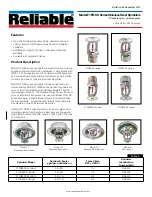
5 Commissioning a New Filter
5.1 Identifying the Filter Capacity
•
Identify the local carbonate hardness or total hardness using the enclosed carbonate
hardness or total hardness test kit.
•
Identify the filter capacity using the capacity tables (Chapter 7) taking account of the
carbonate or total hardness identified and the bypass setting (Chapter 5.1).
5.2 Flushing and Bleeding the Filter Cartridge
Note:
A bucket with a minimum capacity of 10L is needed for flushing/bleeding.
10 L
•
Place the bucket under the flush hose and open the flush valve
15
.
•
Open the inlet valve
6
on inlet hose
5
while holding the flush hose
in the bucket. Flush with at least 10 litres.
•
Close the flush valve
15
and empty the bucket.
•
Check system for any leaks.
•
Note installation date of the filter system on pressure vessel
1
and next exchange date on the enclosed sticker and attach it to the
Service Pass on the pressure vessel
1
.
6 Exchanging the Filter Cartridge
The filter cartridge must be replaced after 6–12 months, at the latest 12 months after
commissioning, irrespective of the level of exhaustion of the filter system. If the capacity
of the filter cartridge has been exhausted (Chapter 7), it must be replaced earlier.
!
Caution:
During the exchange, carefully examine all dismantled parts! Faulty parts
must be exchanged, dirty parts cleaned! Read the operating and safety information
(Chapter 3) prior to replacement. After the product has been stored at temperatures
below 0 °C, it must be stored with the original packaging open at the ambient temperature
of the place of installation for at least 24 hours before use.
15
















































